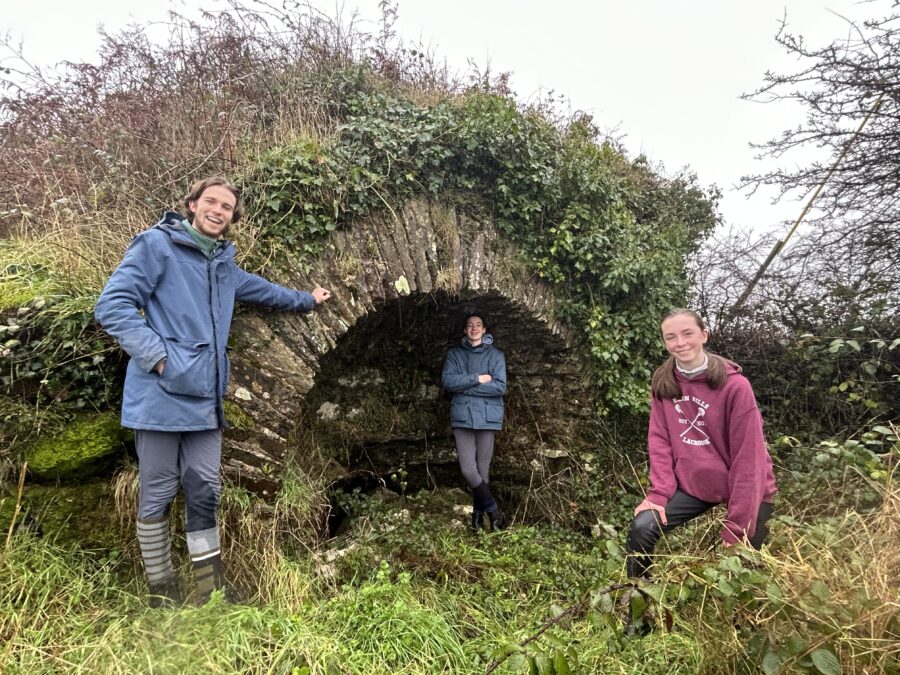
Kieran’s Our City, Our Town Article,
Cork Independent, 19 October 2023
Extracts: The A-Z of Curious County Cork
My new book, The A-Z of Curious County Cork is available in any good bookshop. Published by History Press UK (2023) the book has been born out of my own personal curiosity for many years now to venture off the main roads of County Cork to explore the curiosities of cultural heritage in County Cork. This week’s column shares more extracts from the new book.
AUTOPSY: On an information panel high up in Cousane Gap near Keakill, overlooking Bantry Bay, one encounters the story of body snatchers. In the early nineteenth century, bodies were dug up and robbed from the local cemetery in Kilmocomogue. They were for sale and use in anatomy classes in medical schools in Cork city to meet the necessity to carry out autopsies to study more about human anatomy and educate their students.
It was legal for surgeons to dissect the bodies of convicted murderers, who were hanged for their crimes. But the small number of bodies handed over was not enough to meet the growing science of anatomy. A horse and cart conveyed the bodies from Kilmocomogue. However, the immoral activity was eventually targeted by a local vigilante group, who safeguarded freshly dug graves.
BLOOD: In the parish of Durrus near Bantry lies Loch Na Fola, or Blood Lake. The 1937–38 National Schools Folklore Collection records that long ago, a man had to go to Durrus to fetch a priest for a sick person. He had to pass a place on the hill where a ghost was often seen. Near this place, there was a lake. He rode his horse to this location and took with him a scythe. The man and his horse arrived at the point where the ghost was seen. Suddenly, his horse automatically halted. A ghostly tall man emerged from the landscape and strode before the horse on the road. The man raised his voice to the stranger, ‘Come off the road and let the horse pass’, but the ghost did not move. He reiterated his call several times, but the ghostly figure would not move from where he was.
The man grew angrier, dismounted his horse and cried, ‘Are you going to come off the road and let the horse pass?’ but the stranger did not stir. The man then struck him on the head with the scythe, which he had in his hand. The stranger fell to the ground and covered the whole place with blood. The man jumped on his horse and fled. The blood steadily flowed into the adjacent lake, and in the morning it was overflowing with blood. Ever since, that lake has been called Loc Na Fola or, in English, Blood Lake.
DITCH: The Cliadh Dubh, or the Black Ditch, runs for over 13.5 miles from the Ballyhoura Mountains to the Nagle Mountains. This ancient linear earthwork, which is estimated at over 1,000 years old, crosses the Blackwater Valley in north-east County Cork. Rich folklore presents many tales on the origins of the ditch. One tale relates that a huge black boar with large tusks angrily tore through the countryside leaving a vast earthen linear mound. Another tale speaks of a large worm burrowing its way through the land. However, the real reason for its construction and its use will never be known. Among the more plausible reasons is that it could define an ancient territorial border and help defend important paths and routeways, or even protect cattle from attacks from wild animals or from other people’s raids.
Comparable earthworks can be discovered in other parts of Ireland – for example, the Black Pig’s Dyke, which shaped the margins of the ancient Kingdom of Ulster. In the present day, the Cliadh Dubh is mostly difficult to recognise within its immediate landscape and field boundaries. However, it still provides boundaries for several townlands and parishes.
Enrich: In the townland of Ard na Gaoithe, near Watergrasshill in mid-County Cork, adjacent the local ancient church and graveyard lie the accessible but ruined and curious remains of a lime kiln. It is one of hundreds scattered across County Cork and across the Irish landscape. Their curiosity lies in their function for enriching the land with powdered lime as fertiliser. The powder was created by burning limestone rocks in an enclosed kiln. Where limestone was an underlining rock, it was readily accessible.
Limestone was initially smashed up into smaller pieces. They were put in the kiln from the top with alternate layers of existing fuel such as oak or turf. Burning lime involved an immense volume of work: digging or constructing the kiln, collecting rocks, chopping, carting and throwing fuel down the kiln, keeping attention on the kiln. The kiln was lit and burned for up to a fortnight before the fire was permitted to be extinguished.
After a cooling period, the burnt limestone was withdrawn through an opening at the base. Water was spread over the burnt stone, and it slaked off into hydrated or slaked lime. Burnt lime had a wide range of functions. Lime mortar could be used for fertiliser and bonding stone walls, as well as providing limewash for painting traditional-style Irish cottages. Lime could be used for softening water and decreasing the acidity of butter, cream, milk and ‘sour’ soil. Other applications include sanitising outhouses and making sheep dip, drying cuts on livestock, tanning leather and killing insect pests.
The A-Z of Curious County Cork by Kieran McCarthy is published by History Press, UK (2023) and is in any good bookshop.
Caption:
1224a. Lime kiln at Ard na Gaoithe townland, Watergrasshill, with locals Kyle Furney Kelly, Fia Furney Kelly and Ned Quigley, December 2022 (picture: Kieran McCarthy).